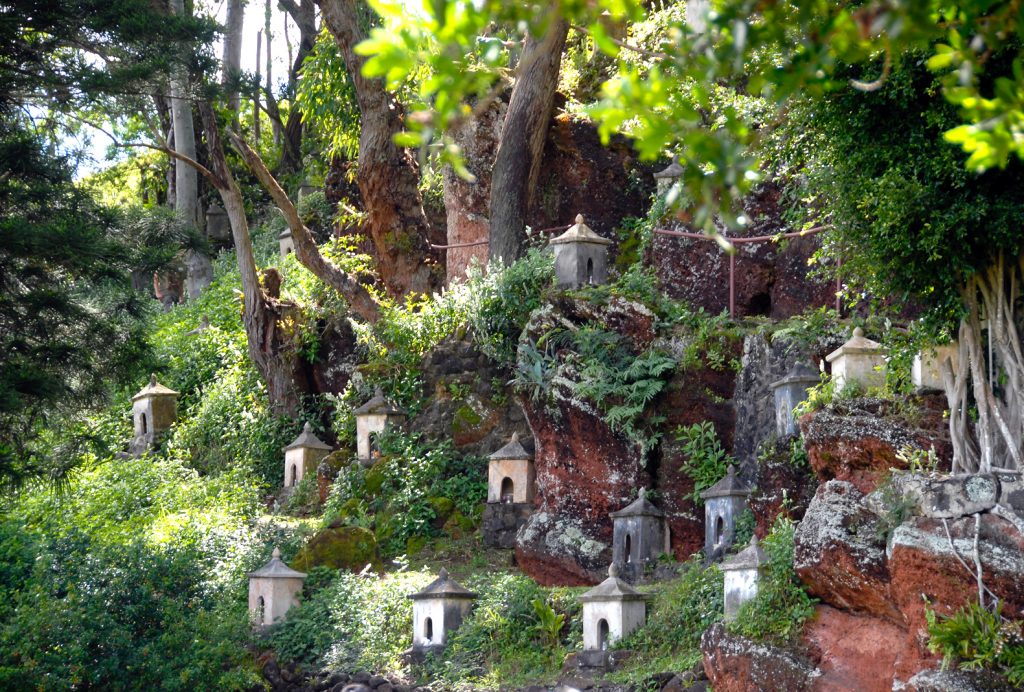Hawaii’s first Japanese immigrants came to Kauai in the late 19th century to labor in the sugarcane fields. In a new environment and under harsh conditions, they found ways to keep alive their traditions and cultural life. In the Lawai Valley, in a place long considered sacred by Native Hawaiians, they created a most extraordinary example of this.
Beginning in 1904, Japanese workers built along a high, steep hillside a miniature version of the 750-mile Shikoku Pilgrimage, associated with the Buddhist saint Kukai (774–835), honorifically known as Kobo Daishi. The Shikoku Pilgrimage comprises 88 temples, and its course symbolizes the journey to complete enlightenment. The path snaking up the Lawai hillside has 88 small shrines, stone images—often hybrid, sometimes playful—of buddhas and bodhisattvas. One can traverse the path in as little as half an hour, but one might well feel drawn to take time to stop along the way to admire the shrines and perhaps offer a bow or quick chant as well.
Over the years, as workers moved away, the site fell into disrepair. But beginning in 1991, under the leadership of a diminutive dynamo named Lynn Muramoto, and with the work of hundreds of volunteers, the Lawai International Center has refurbished the site and provided it with a renewed vision as a place of contemplation and healing open to all.
Thank you for subscribing to Tricycle! As a nonprofit, we depend on readers like you to keep Buddhist teachings and practices widely available.
